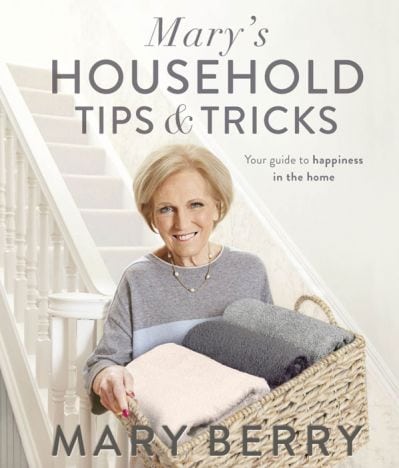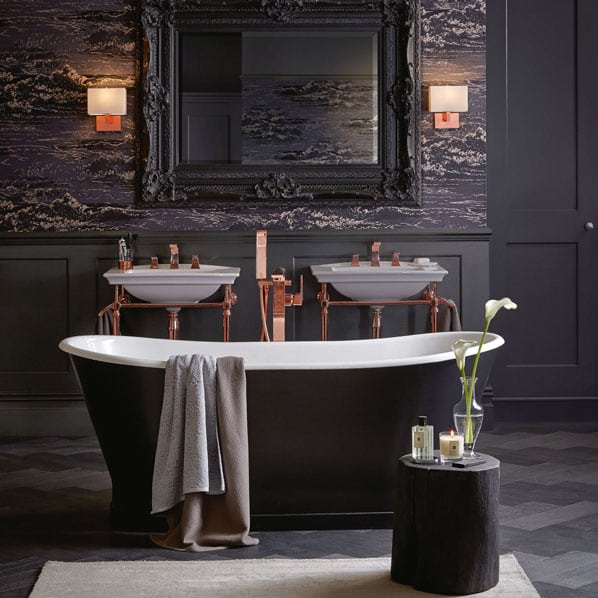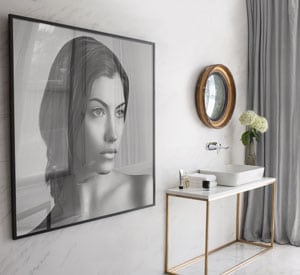You know what? Underneath that tired, possibly stained, dust mite-infested carpet, there’s very likely a wooden floor that could look a million times better – if you knew how to sand and paint it.
Luckily, I did just that recently, so here are my tips for doing it yourself…
1. Clear the room – Sanding a wooden floor can be dusty, especially if you have gaps between floorboards to fill. Take all your furniture out, cover shelves and mantels with plastic sheeting and take the curtains or blinds down. This will save you hours of time (and heartache) later, and it’s never a bad idea to stick the curtains into the dry cleaners when you’ve got them down.
2. Prepare the floor – Your wooden floor may have cuts in it from electrical or plumbing fitting, or from various repairs. You may even need to replace a board or two if they’re badly damaged. Fill any gaps you find with two-part wood filler. If your gaps are wider than 5mm, you may need to roll up some newspaper and press it into the gap to give you something to fill up against. Carefully lift any mouldings you find, which can sometimes sit between floorboards and a skirting board. If you lift these gently, you might be able to salvage them, otherwise most DIY stores have huge moulding selections you can replace them with. If you had carpets down, you’ll need to lift the gripper rods and any staples that held your underlay down. Also, if you’ve taken carpet up, you’ll need to get a different profile of threshold strip for any doorways into the room. If you’re going to paint the floor, fix down any loose, squeaky boards by screwing them down before you start filling. However, if you want to varnish your floor, use brad nails to secure your boards instead, as it’s a better look on wooden boards. It’s very important not to screw or nail down the middle of the end of your floorboard, as this is where the pipes and electrics will run if you have them. This is why floorboards are secured in the corners instead.
3. Get sanding – If your room is small, you have the time – and if your fingers could stand up to the grating they’d get – you could sand your floor by hand. But the best plan is to hire a drum floor sander from any building hire shop. They are a bit heavy, but you can have them delivered with plenty of sandpaper, and they’ll do the job very quickly and easily. Use 40 grit sandpaper to start, if you have old varnish or lots of ground-in debris, then use 120 grit to finish, so the surface ends up smooth. Work methodically up and down the room, making sure you don’t sand in one place for too long – the coarse sandpaper can really eat into the boards. Finish sanding the edges of the floor where the sander can’t quite reach by hand (or you could also borrow an edging sander), and then sweep and vacuum up the dust. And it’s a good idea to shake out your dust sheets now, so no dust falls on your floor while you’re painting.
4. Choose the right paint – You can paint, stain or varnish your sanded floor in a wide range of colours and finishes, but make sure you buy products that are specifically for floors – they are harder wearing and certainly worth the small extra cost per litre. You can use 3″ or 4″ brushes to paint with. If you use a roller, which is quicker, it will leave your floor with a stippled effect, which doesn’t look so good on a painted floor. With a brush, you can lay off your paint work for a smoother finish – this means painting in the direction of the grain of wood, and painting any drips back into the wood. If you are painting your floor, you’ll need to put at least two coats of undercoat down first. Make sure you use a compatible undercoat to the top coat you are using – they are often designed to work together. I used Farrow & Ball paint for my floor, so two coats of wood floor primer and undercoat, followed by two coats of Charleston Gray Modern Eggshell.
5. Don’t paint yourself into a corner – Most importantly, start on the far edge of the room and don’t paint yourself into a corner (this does happen, and is a right laugh when the apprentices do it!). If you intend to keep your doors on their hinges during the job, make sure you paint the floor behind them before you paint yourself out of the room. Also, open the windows so you don’t poison yourself with fumes. Pay attention to the drying times, so you can get multiple coats on efficiently, and paint the top coats in the same way. For stains and varnishes, apply in the same way, just don’t forget that ventilation – they can be really smelly.
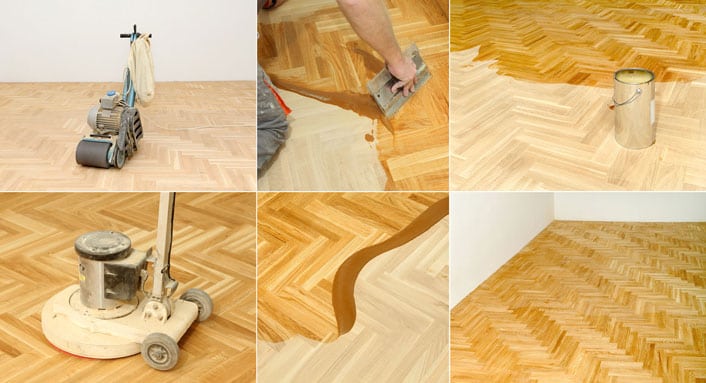







 What is it?
What is it? What’s it like to drive? – BMW M5s of old had a reputation for being somewhat spiky to drive. This latest one has been designed to offer a little more traction – and it’s well and truly achieved this. Despite packing close to 600bhp, the M5 rarely feels out of control, instead offering a lot of balance and adjustability. The biggest factor in this is that all-wheel-drive system. There’s no doubting the car’s rear-drive-bias; when the system is set to allow a certain amount of slip, the M5 will fall into delightful mini-drifts, sliding you through corners without ever feeling like it’s going to spin around and bite you. Turn all the systems back on, and it transforms into a point-to-point weapon with all of the traction you could want.
What’s it like to drive? – BMW M5s of old had a reputation for being somewhat spiky to drive. This latest one has been designed to offer a little more traction – and it’s well and truly achieved this. Despite packing close to 600bhp, the M5 rarely feels out of control, instead offering a lot of balance and adjustability. The biggest factor in this is that all-wheel-drive system. There’s no doubting the car’s rear-drive-bias; when the system is set to allow a certain amount of slip, the M5 will fall into delightful mini-drifts, sliding you through corners without ever feeling like it’s going to spin around and bite you. Turn all the systems back on, and it transforms into a point-to-point weapon with all of the traction you could want.



 “The missed opportunity on the stamp duty front is directly linked to the weakness of this Government,” according to John Holden Chairman of McCarthy Holden, “and the mid to top end property sectors are long overdue a stamp duty reduction since the disastrous hike in the stamp levy on larger properties by George Osborne”
“The missed opportunity on the stamp duty front is directly linked to the weakness of this Government,” according to John Holden Chairman of McCarthy Holden, “and the mid to top end property sectors are long overdue a stamp duty reduction since the disastrous hike in the stamp levy on larger properties by George Osborne” MasterChef winner Tim is American, so his first British Christmas was quite the experience: “First of all, so many desserts – trifle, the cake, the Christmas pudding. Then my mother-in-law makes Christmas cookies and rocky road. Mince pies; I didn’t like them at first, I thought they were too sweet, but now I can’t get enough of them. And then the roast dinner, which I think is the height of British cooking. Roast potatoes, my father-in-law taught me to make them and they’re amazing. We just do mash in America.”
MasterChef winner Tim is American, so his first British Christmas was quite the experience: “First of all, so many desserts – trifle, the cake, the Christmas pudding. Then my mother-in-law makes Christmas cookies and rocky road. Mince pies; I didn’t like them at first, I thought they were too sweet, but now I can’t get enough of them. And then the roast dinner, which I think is the height of British cooking. Roast potatoes, my father-in-law taught me to make them and they’re amazing. We just do mash in America.”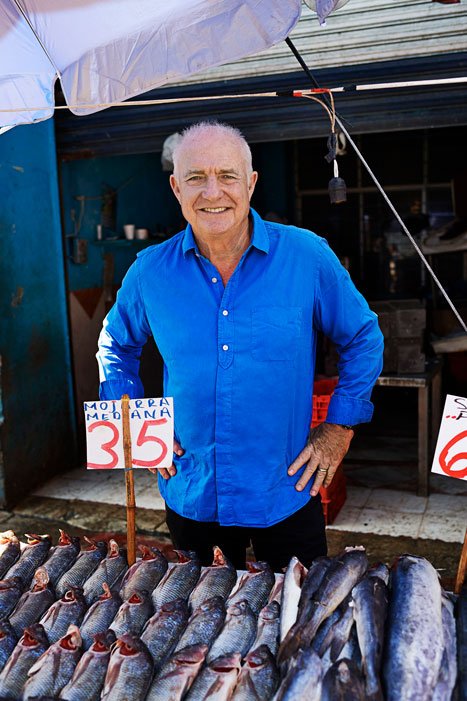 “The first time I had an Australian Christmas, which was salad and prawns outdoor by the pool – and this was in the early-Eighties; my fond memories are always of having turkey or goose – but having a genuine Australian Christmas, which a lot of Aussies don’t have, they still have roast turkey, was quite special,” says the seafood aficionado.
“The first time I had an Australian Christmas, which was salad and prawns outdoor by the pool – and this was in the early-Eighties; my fond memories are always of having turkey or goose – but having a genuine Australian Christmas, which a lot of Aussies don’t have, they still have roast turkey, was quite special,” says the seafood aficionado.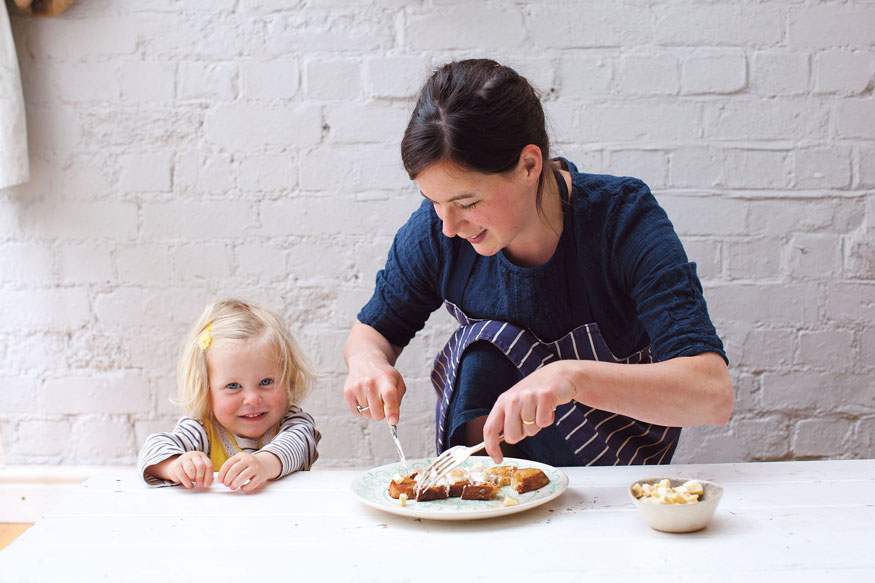 The ‘5 O’clock Apron’ blogger lived in Africa until she was eight, so grew up having hot Christmases by the pool, as did her Kiwi husband Matt. But some of her favourite Christmases have been since she moved to England and started spending them at her mum’s house in Shropshire, although they still rarely have turkey: “We have a brilliant photo of Matt standing in gum boots in about 3ft of snow with a head-torch on, barbecuing steaks in my mum’s garden.”
The ‘5 O’clock Apron’ blogger lived in Africa until she was eight, so grew up having hot Christmases by the pool, as did her Kiwi husband Matt. But some of her favourite Christmases have been since she moved to England and started spending them at her mum’s house in Shropshire, although they still rarely have turkey: “We have a brilliant photo of Matt standing in gum boots in about 3ft of snow with a head-torch on, barbecuing steaks in my mum’s garden.”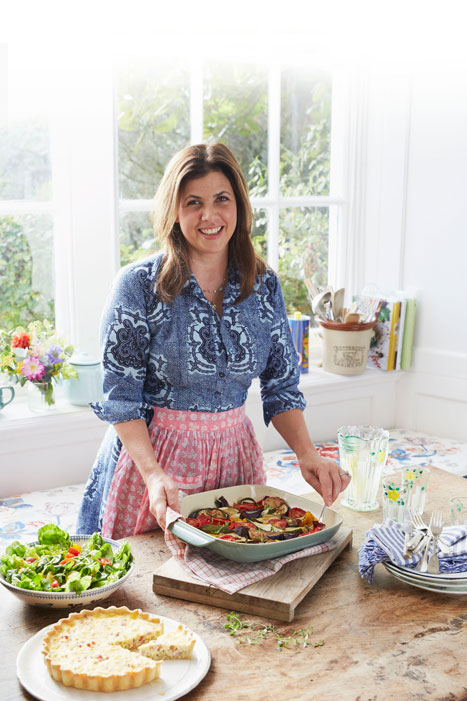 To avoid rushing about with the turkey, while the kids open their presents first thing, the presenter and Kirstie’s Real Kitchen author has restructured Christmas day: “I like to do the supper at six o’clock, after the Queen’s speech, and basically have an all-day, rolling breakfast while everyone opens their presents. So, pancakes, scrambled eggs and maybe a bit of salmon – easy things. You can keep everyone fed and occupied – maybe have a couple of glasses of prosecco – and then have a big early supper.”
To avoid rushing about with the turkey, while the kids open their presents first thing, the presenter and Kirstie’s Real Kitchen author has restructured Christmas day: “I like to do the supper at six o’clock, after the Queen’s speech, and basically have an all-day, rolling breakfast while everyone opens their presents. So, pancakes, scrambled eggs and maybe a bit of salmon – easy things. You can keep everyone fed and occupied – maybe have a couple of glasses of prosecco – and then have a big early supper.” “Here, it’s all about having a starter and then having this huge plate, where the turkey goes on top and the Yorkshire pudding and the potatoes, then it’s pretty much over. In Italy it’s different,” explains Gino D’Acampo, whose new book, Gino’s Italian Coastal Escape, was recently released. “We do between 10 and 15 different courses. We have fish, because we don’t have turkey. One of the dishes we do is sea bass cooked in a salt crust. We do a lot of antipasti, cured hams and cheeses. Then we do one or two plates of pasta. There is a lot for everybody, and you put everything in the middle of the table and spend four or five hours eating all beautiful different kinds of foods.”
“Here, it’s all about having a starter and then having this huge plate, where the turkey goes on top and the Yorkshire pudding and the potatoes, then it’s pretty much over. In Italy it’s different,” explains Gino D’Acampo, whose new book, Gino’s Italian Coastal Escape, was recently released. “We do between 10 and 15 different courses. We have fish, because we don’t have turkey. One of the dishes we do is sea bass cooked in a salt crust. We do a lot of antipasti, cured hams and cheeses. Then we do one or two plates of pasta. There is a lot for everybody, and you put everything in the middle of the table and spend four or five hours eating all beautiful different kinds of foods.”


 Local property hotspots in areas such as the Blue Triange in Fleet and the Cricket Green in Hartley Wintney have seen £ per square metre levels as high as £4,304 and £6,521 respectively, which sounds robust so how does that compare to other parts of the UK? These hotspot figures do not represent an average for the area, so bear this in mind when reading the following.
Local property hotspots in areas such as the Blue Triange in Fleet and the Cricket Green in Hartley Wintney have seen £ per square metre levels as high as £4,304 and £6,521 respectively, which sounds robust so how does that compare to other parts of the UK? These hotspot figures do not represent an average for the area, so bear this in mind when reading the following.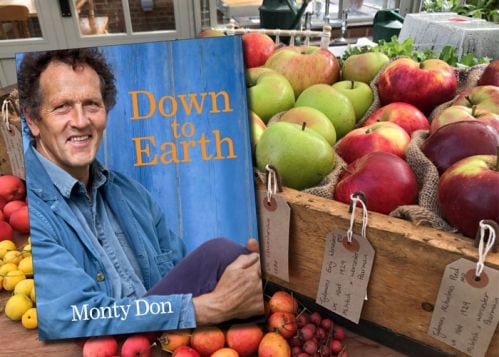
 “My focus may have been on cooking, but it’s always centred on the home. In my books and TV programmes, I’m always keen on sharing tips to help people,” says the cook.
“My focus may have been on cooking, but it’s always centred on the home. In my books and TV programmes, I’m always keen on sharing tips to help people,” says the cook. Here are Mary’s top tips:
Here are Mary’s top tips: